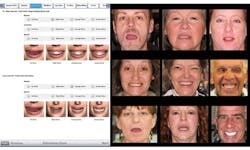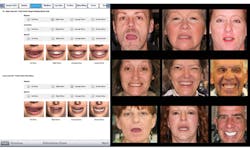Intercept Failure
by Joseph J. Massad, DDS
Welcome back. This month being the last of my 2013 tips, I decided to discuss one of the most frequently asked questions of this year.
Question: Dr. Massad, what makes you so enthusiastic about making dentures when you deal with the population with the highest complaint statistics?
Answer: How can I not help but be excited, since challenges treating the edentulous can be the most rewarding of all in my life as a dentist? Treating these patients requires the very best I can provide for them while reversing the problems that exist in this area of dentistry. Since I deal with many complaining patients, I have devised a method to intercept a complaint before it materializes. The statement I have been making for the last 20-plus years is "Anticipate failure; then intercept it." After experiencing problems with chronically complaining patients in my own practice, I conducted surveys of dentists around the world in search of universal commonalities. Once these statistics were compiled, I addressed each problem and offered a solution. Here are some of the examples of patient complaints:
- My smile is crooked.
- My midline is off.
- My teeth are too big.
- My teeth are too small.
- I have a gummy smile.
- My teeth are too dark.
- My teeth are not perfectly straight.
- My teeth are loose.
- I can't eat.
- My mouth is constantly sore.
Knowing these are universal complaints, I became motivated to find valid solutions and address these issues before a patient expresses the complaint to me. The majority of complaints are perceived as esthetic issues.
Solution: Since we are all asymmetrical to some extent, esthetics should be considered to be in the eye of the beholder. Part of the assessment and examination protocol is to address all facial asymmetry by taking a series of patient photographs, which are then displayed in a digital examination application. Patients' photos are transferred to the computer app, where they are placed next to a variety of freeze-frame facial images from which patients can select the one that best describes their face in various positions, such as resting and smiling positions.
The patients can now see their own face and compare it to the facial images relating to a resting position and a high smile, and they can observe the amount of teeth and/or gum showing, the asymmetry of their smile, any lip pull that exists, the shade and size of their teeth, and the arrangement. This is a codiscovery exercise that is undeniably the best method I have found for patients themselves to see. Patients now must choose what changes they want and the dentist must decide if he or she can make none, some, or all of the requests, or whether something in between can be achieved to a patient's acceptance. Without this exercise, we are at risk of the unknown at the try-in appointment.
As for soreness and chewing problems, we can determine whether or not a new complete removable prosthesis will satisfy someone's needs by closely observing other pertinent information requested in the examination app.
However, offering treatment options such as implants and other surgical procedures in many cases will resolve these other complaints. Your patients now have the opportunity to consider these treatment options, thereby mitigating many of their existing problems. Many times patients may accept or reject these treatment options. If patients deny treatment options that you have indicated would improve their particular complaint, then the responsibility is now transferred back to them, where it should be for the patient to decide. Remember; let your patients know that you cannot promise you will give them everything they desire in life, but under the particular conditions they have presented, you will do your best to improve upon what they have. Allow them to accept or reject your recommendations.
I hope my pleasure in dentistry will also be yours. Until next month, be safe.
Joseph Massad
Dr. Joe Massad may be reached by phone at (918) 749-5600 or by e-mail at [email protected].
To see Dr. Massad's video tips, visit www.DentalLibrary.com
Past DE Issues

